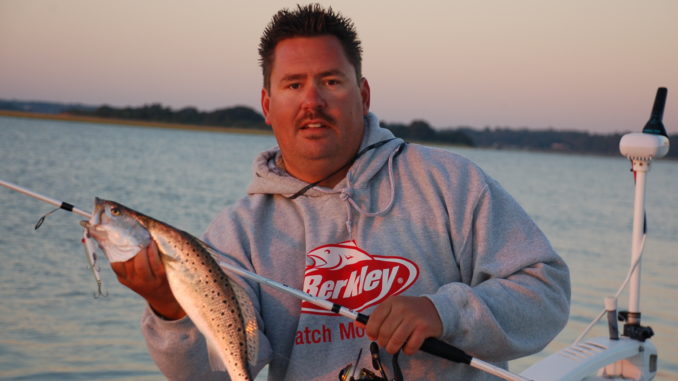
New may be pretty, but established lures fool fish for a reason that hasn’t changed
Ever since James Heddon first debuted his fishing lures to the public, the way people catch their finned fare will never be the same. For the avid inshore saltwater angler, fall means speckled trout, and despite massive collections of artificial lures that have hit the market over the past 50 years, are the newest baits the best way to fool specks, or are do those “old reliables” need to take over the driver’s seat?
Well, it’s simple. Diehard anglers will have a generous assortment of artificial lures, with a wide selection of the newest ones and a big section of tackle boxes dedicated to lures that first debuted back when Richard Nixon was in the White House. The fact is, some lures just always produce fish.
For more than 30 years, Capt. Gene Dickson of Delta Guide Service has guided anglers through the pristine marshes of Georgetown for speckled trout, redfish and flounder. According to Dickson, new lures and colors can and will catch fish, but the standard lure options are often the best weapons to use when the pressure is on.
“During the fall, we typically catch 40 to 50 trout per day of all sizes and shapes on lures,” said Dickson (843-546-3645), “but, the majority of these fish still come on the same ole leadhead jig with a 3- or 4-inch curlytail grub.”
The jig/grub combo is the most-widely used inshore lure anywhere. The standard curlytail has a unique swimming action and a tempting profile that most fish will feel comfortable ordering at the drive through.
Dickson will fish the most-recent lures, in some cases just because the novelty will fool fish, especially in different colors.
“When a new lure comes out that is supposed to be the cure-all end-all, we have to try it, and in some cases, the new lures do make a difference, even if it is just the color. The other day, the only thing the fish would bite were electric chicken-colored grubs,” Dickson said.
Nevertheless, Dickson keeps his tackle box stocked with standard, reliable colors.
“Chartreuse and charcoal metal flake are two staple colors that always catch fish in my area,” he said.
In the marshes around Little River, Capt. Kyle Hughes of Speckulator Inshore Fishing Charters loves late-model lures, as well as older, standard selections.
“Bass Assassin’s Sea Shad on a jighead has caught trout for me ever since I picked up my first fishing rod many years ago,” said Hughes (910-840-7186). “When you tie the lure on with a loop knot, the wobble looks good in the water and is very effective.”
Hughes sticks with these colors, which will cover just about any kind of water clarity: electric chicken, opening night, chartreuse woodpecker and space guppy.
Beyond soft baits, a good selection of hard baits will produce a limit of specks in a hurry, and among a selection of hard baits aboard his boat, Hughes will usually pick a MirrOlure.
“MirrOlure’s old 52M is a slow sinker that has caught tons of trout for me over the years, and the 808 or black with orange and silver body is tough to beat in any water color,” he said. “But the 17 and 18MRs are somewhat newer creations for MirrOlure and can be super deadly.”




Be the first to comment